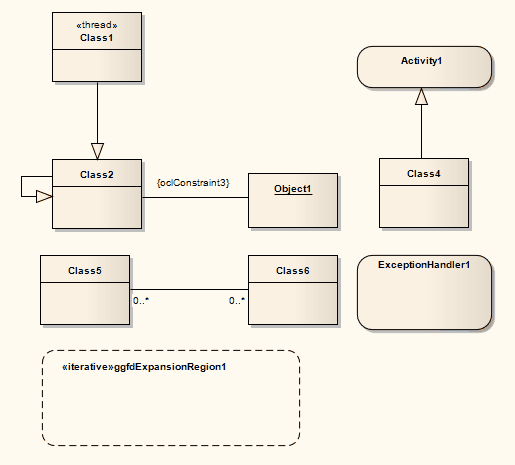Please note : This help page is not for the latest version of Enterprise Architect. The latest help can be found here.
Model Validation

You use Model Validation to check UML models against known UML rules (which you identify in configuring validation) as well as any constraints defined within the model, using the Object Constraint Language (OCL). You can run Model Validation against a single UML element, a diagram or an entire package.
Access Project | Model Validation | Validate Selected (Ctrl + Alt + V)
Topics
Topic |
Detail |
See also |
||||||||
|---|---|---|---|---|---|---|---|---|---|---|
Validating |
Validating a UML:
|
|
||||||||
Example - Model Violation |
The following UML diagram contains several basic violations:
If you run Model Validation on this diagram, Enterprise Architect displays the following violations in the Output window:
|
|
How to
To use Model Validation
Step |
Action |
See also |
|---|---|---|
1 |
Select the package, diagram or element either from the Project Browser or within an open diagram.
|
|
2 |
Select the Validate Selected menu option. Enterprise Architect performs the validation, and displays the results in the Output window (if the Output window does not automatically display, select the View | System Output menu option). While performing the validation, Enterprise Architect also displays a progress window containing the Cancel Validation button, which enables you to cancel the validation process at any time. Alternatively, select the Project | Model Validation | Cancel Validation menu option.
|
Notes
| • | If you double-click on an error in the Output window, you select the diagram element that the error message refers to |
Learn more
